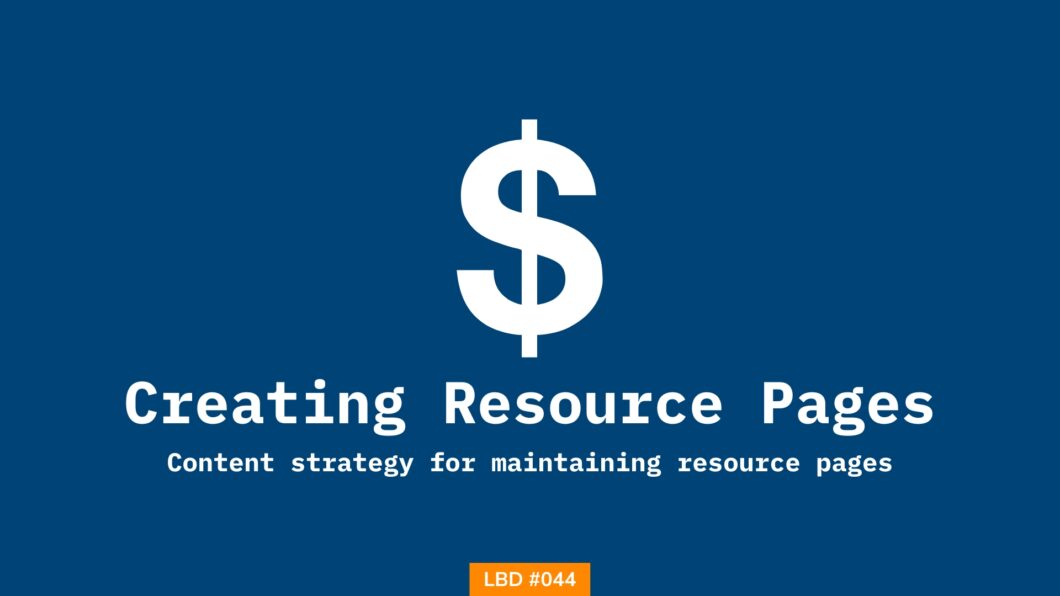Reading: 3.5 minutes
Key Takeaways
One of several reasons why people don’t visit your blog is they don’t see any value in doing so. It’s frustrating to put in a ton of effort only to see crickets on your blog.
Most blogs don’t have any sort of repository that people can look up to. If you’re one of them, it’s about to change now.
As you use the resource page to build trust, make sure to show it through every action, including the recommendations you add.
Neil Patel did it with Ubersuggest, and Aleyda Solís did it with Learningseo.io. Resource pages are leads/revenue generation machines if done right.
Here you will learn how to create a resource page that boosts your blog’s success and engages users, even if you’re experiencing low traffic.
By the end of this issue, you will be able to:
- Create a resource page that adds to your profit
- Create a content strategy with a resource page as the hub
- Create a go-to repository for your readers
Picture this. You have a blog that’s known for the resource page Aleyda Solís is a classic example of this. Learning SEO is adding so much credibility to her already well-established brand. This makes people come back for more.
If you’re even an experienced SEO or blogger, you’d know the importance of returning visitors.
The only thing you need to do is create a page & add some resources you love using. It can be affiliate links or organic links that you’d promote.
Why should you create a resource page?
Resource pages, apart from being a source of traffic & revenue, there are a few more benefits that you should know about:
- A centralized hub for valuable & curated content. You can also use the resource page to organize the most important pages & drive internal traffic
- Increased authority & trust among your audience. People will look up to your resource page & rely on it, which is the whole point of having a blog in the first place
- The resource page will attract natural links to the page. You can also optimize the resource page for top keywords & get organic traffic
- The resource page will remain relevant forever. Relevance is what every blog is looking for
With that said, here are 3 simple ways you can create a resource page.
Step 1: Include trusted sources only
When you’re creating a resource page, keep this in mind – people are relying on the page you’re maintaining, it can’t be spammy. Especially if you’re into a sensitive niche like health care, legal, or finance. The resource page you create will be the source of reputation and authority.
Use the resource page to establish yourself as a trusted source. Promote yourself, because no one else will.
The rule of thumb is never to promote anything you don’t use. Finally, when you include affiliate links add a disclosure or link to a page containing the relevant clauses.
Step 2: Describe why you included the recommendation
As you use the resource page to build trust, make sure to show it through every action, including the recommendations you add.
When you share the reason for including the recommendation, people will connect and rely on you as a trusted source. The descriptions will not add value to readers, but they will also act as SEO content & rank for more keywords.
Step 3: Organize your best posts on the resource page
This is the best use case of the resource page & I love this one. You can use the resource page to curate (in an organized manner) your best pages from the blog. This can also be a list of pages that one type of audience profile would need as part of their journey. For example, creating a section for beginner bloggers containing pages like “start a blog”, “Monetization ideas” etc
SEO this week (News Updates)
- Google Analytics 4 is here & there’s already so much people hate about it
- How to utilize Excel & AI to find untapped keywords
- YouTube comments to have hyperlinks (but with a twist)
Clickworthy resources (from LinkedIn, Twitter, YouTube & web)
- Struggling to create content for Linkedin? Steal this system
- Want to rank before competitors overtake you?
How can I help you?
I put a lot of effort to come up with a single edition of this newsletter. I want to help you in every possible way. But I can do only so much by myself. I want you to tell me what you need help with. You can get in touch with me on LinkedIn, Twitter & Email to share your thoughts & questions that you might have. I’d be more than happy to help.
If you’re looking forward to winning online, here’s how I can help:
- Sit with you 1-on-1 & create a content marketing strategy for your startup. Hire me for paid consulting.
- Write blogs, social posts, and emails for you. Get in touch here with queries (Please mention you found this email in the newsletter to get noticed)
- Join my tribe on Twitter where I share SEO tips (every single day) & teaser of the next issue of Letters ByDavey.

